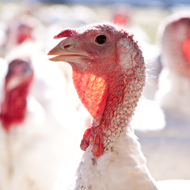Avian flu: wild birds a "possible source"

BVA has advised poultry keepers to work with their local vet.
After recent outbreaks of avian flu in East Yorkshire and Germany, Defra has released updated guidance on biosecurity. Investigations to determine the origin are ongoing, but Defra has said wild birds are a "possible source".
A cull of 6,000 birds has been completed on the Yorkshire duck breeding farm, where an outbreak of the highly pathogenic H5N8 strain was confirmed on November 16. It was the first UK case of the H5 strain since 2008.
Poultry keepers are being advised to minimise contact with wild birds while the source of the outbreak is being investigated.
Guidance includes:
- Ensuring housing is bird-proof to reduce the likelihood of contact with wild birds
- Minimising contamination of food and water supplies by wild birds
- Avoiding placement of housing close to water
- Preventing the accumulation of standing water
- Removing any spilled feed that could attract wild birds
- Isolating new birds before they are placed with existing farm birds
- Providing clean food and drinking water, preferably indoors, to avoid contamination
BVA president John Blackwell has welcomed the update. "The advice emphasises the importance of maintaining the highest biosecurity standards during an outbreak of avian flu, including protecting domestic poultry flocks from the risk of contact with wild birds.
"Poultry should be housed where possible and kept away from standing water, with food and water supplies protected. BVA would encourage poultry keepers to work with their local vets and take their advice on appropriate biosecurity measures if in any doubt".
Avian flu spreads between birds through direct contact or contaminated body fluids or faeces. Highly pathogenic avian flu is often fatal in birds. Clinical signs include a swollen head, loss of appetite, blue discolouration of neck and throat, diarrhoea, fewer eggs laid and respiratory distress including gaping beak, coughing, sneezing, gurgling or rattling. Some species, including ducks and geese, may show minimal clinical signs.
For further information, visit Defra's website: https://www.gov.uk/avian-influenza-bird-flu#biosecurity-guidance



 FIVP has shared a survey, inviting those working in independent practice to share their views on the CMA's proposed remedies.
FIVP has shared a survey, inviting those working in independent practice to share their views on the CMA's proposed remedies.